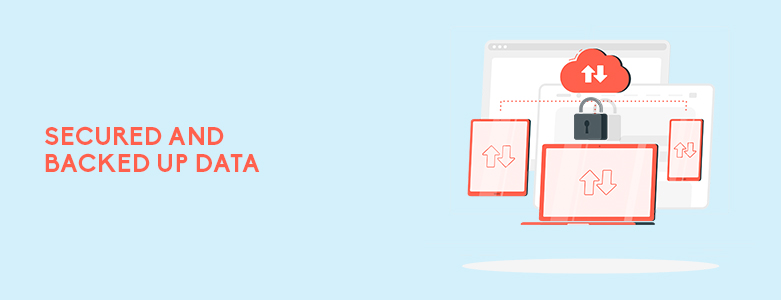
What are some of the benefits of cloud computing in education?
- Access to educational tools
- Improved collaboration
- Saved time
- Learning for a diverse range of students
- Cost-savings
- Secured and backed up data
With the move to online schooling, many educational institutions are now looking into cloud computing because of its benefits. It allows students and teachers to access updated learning tools from anywhere, making collaboration easier and saving time. The remote capacity of cloud platforms means that a more diverse range of students can also be reached by educational institutions while lowering costs. Keep on reading for the benefits of cloud computing in education.
Access To Educational Tools

A cloud platform makes it easier for students and teachers to access educational resources. Students can view the same books, modules, and learning materials regardless if they’re using a tablet or a desktop. This eliminates the need for physical textbooks and makes studying more convenient because only one device is needed for several subjects.
This benefit also applies to teachers and educators because lesson plans and coursework can be uploaded, updated, and accessed anytime. A teacher can work from anywhere — whether at school or remotely at home.
Cloud computing also allows students to access updated learning materials. This is important because there is always newer information that needs to be added to the coursework to make teaching more accurate. Teachers can update the lesson material in real-time through a cloud platform. This means that schools can reduce the need for expensive textbooks that have to be replaced often.
Another advantage is that changes can also be reverted because some cloud platforms can save multiple versions of a document. This is useful when a user accidentally deletes a file or portions of a document.
Improved Collaboration

Cloud platforms allow users to collaborate in real-time. For instance, students can work on the same assignment from the comfort of their homes. Meanwhile, students who get sick or can’t attend classes can catch up on homework, quizzes, and lessons too.
The improved collaboration is also beneficial for teachers, as they can share lesson plans with coworkers or provide feedback to students instantly. This can make working with different departments and schools more convenient and less time-consuming.
Saved Time

Cloud computing in education can help save time for both students and teachers. From sharing notes, taking exams, working on projects, grading assignments, and more — everything can be done almost instantaneously.
Various tasks can be done remotely, which means that users can find the best time to accomplish them — whether they’re on the commute, at midnight, or during holidays. There’s no need to go to school or wait for school hours to complete school-related activities.
This is beneficial for students and teachers who are juggling different responsibilities. Cloud apps and platforms are also straightforward and user-friendly, allowing schools to lessen other IT tasks.
Learning For A Diverse Range Of Students

Cloud computing makes it possible for students who have trouble attending traditional learning institutions to pursue their education. For instance, working professionals might not have time in their week to travel to the school grounds and attend classes that are held in the morning.
Some students also live in cities with only a few schools available. Online schooling can make it possible for them to choose the courses that they want from an educational institution in the next province. Schools that utilize cloud computing can provide learning resources for a diverse range of students — even those who are overseas.
Cost-Savings

There are a few factors that make cloud computing a more cost-efficient option for learning institutions. For one, users can lower the hardware costs. Cloud-based applications are compatible with most devices so students and teachers don’t need to invest in the most expensive computer. Migrating to cloud platforms also means that schools can reduce paper use — which lessens the need for photocopiers, printers, file cabinets, and the like.
Other than that, vendors also offer their cloud services on a pay-as-you-go format or subscription basis. This means that educational institutions can start small and eventually add more premium features or data storage as the need arises.
Secured And Backed Up Data

One advantage of cloud computing is the capacity to increase storage for less cost. There’s less need for hard drives, thumb drives, and other physical storage peripherals. But other than that, there is an option to automatically save changes in the files and back up several versions of it. This means if a computer breaks down, students and teachers are assured that their files are still safe without interrupting learning outcomes.
The right cloud platform will also offer authentication and security features to make sure that learning materials are only made available to the right users.
Key Takeaway
Cloud computing can make learning more convenient, cost-efficient, and flexible for both students and teachers. This is why plenty of educational institutions are implementing this in their operations.
If you want to experience the benefits of cloud computing in education, you can send us a message here at CT Link. We can help you choose the right cloud services that will fit the needs of your teachers and students.

